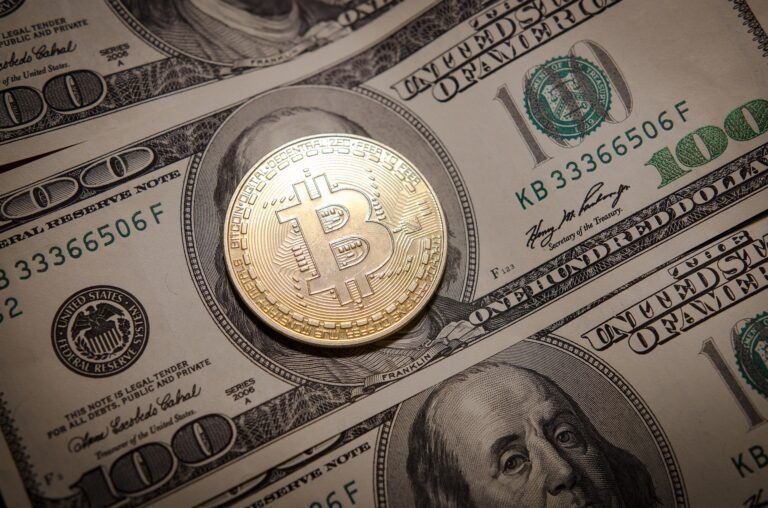On Thursday (June 9), Abby Johnson, Chair and CEO of Fidelity Investments, talked about the crypto during a fireside chat with Matthew Walsh, Founding Partner at Castle Island Ventures, on the first day of the Consensus 2022 event (June 9-12, 2022) in Austin, Texas.
The Fidelity CEO said this about the current bear market:
“I figure this is my third crypto winter, and then when you figure on bear markets and securities market, I’ve seen plenty of ups and downs, but I see that as an opportunity, and I was kind of raised to be a contrarian thinker.
“And so, I have this knee jerk reaction that if you believe that the fundamentals of a long-term case are really strong when everybody else is dipping, that’s the time to double down and just dive extra hard into it, and that’s usually the right move. So, I’m so I’m excited about what’s going. I mean, I feel awful about the value that’s been lost, but I also believe that … there’s a lot of a lot to come and it’s really exciting.“
According to a report by CoinDesk, she also talked about “Fidelity’s recent move to offer bitcoin exposure in clients’ 401 (k) retirement plans,” and she had this to say:
“I would have never thought that we would have gotten so much attention for bringing a little bit of bitcoin to a little bit of the 401(k) business. A lot of people now, that they’ve heard about it, have been asking, so I’ve been happily surprised at the amount of positive feedback that we’ve gotten on that.
“Seeing some of the regulators trying to lean into this is very encouraging and exciting for us… Because if they don’t give us a route to make some of these connections, then it makes it really hard for us in the background to be able to make it feel seamless.“
On April 12, Fidelity Investments announced “the launch of two new thematic exchange-traded funds (ETFs) — Fidelity Crypto Industry and Digital Payments ETF (FDIG) and Fidelity Metaverse ETF (FMET) – and five new fixed income sustainable funds and ETFs – Fidelity Sustainable Core Plus Bond Fund (FIAEX), Fidelity Sustainable Core Plus Bond ETF (FSBD), Fidelity Sustainable Low Duration Bond Fund (FAPGX), Fidelity Sustainable Low Duration Bond ETF (FSLD), and Fidelity Sustainable Intermediate Municipal Income Fund (FSIKX).”
The press release went on to say “these seven innovative new funds will be available on or about April 21, 2022, for individual investors and financial advisors to purchase commission-free through Fidelity’s online brokerage platforms.”
Greg Friedman, Fidelity’s Head of ETF Management and Strategy, said:
“Leveraging Fidelity’s decades of investment expertise, we are focused on growing our broad product lineup with innovative strategies that offer choice, value and new opportunities to investors. We continue to see demand, particularly from young investors, for access to the rapidly growing industries in the digital ecosystem, and these two thematic ETFs offer investors exposure in a familiar investment vehicle.”
Pam Holding, Co-Head of Equity and Head of Sustainable Investing at Fidelity Investments, added:
“Fidelity continues to grow its sustainable investing lineup, with a range of equity, fixed income, and asset allocation strategies, as investors continue to seek opportunities to invest alongside their values and influence positive change in the world. With the addition of these new sustainable fixed income strategies, our clients now have access to building blocks across multiple asset classes to help address their investment goals and priorities.”
On April 20, Jurrien Timmer, Director of Global Macro at Fidelity Investments, commented on Bitcoin’s latest price action, and he had some words of comfort with Bitcoin HODLers who might be a bit worried by the currently bearish crypto market.
He tweeted:
Then, over a series of tweets, he explained what he meant:
“The chart above shows Bitcoin’s fundamentals. The supply curve is dictated by the S2F model… and the demand curve is driven by network growth (Metcalfe’s Law). Until recently, Bitcoin would often overshoot its intrinsic value to the upside during bull markets and to the downside during bear markets. It was a momentum game with little to no resistance, until the trend reached exhaustion.
“But take a closer look at that chart above. In recent months the price of Bitcoin has stopped tracking the S2F model and has instead hugged the pink line (demand model). That makes sense to me. While the S2F model has been an effective model in the past, in my view the demand curve will be the dominant driver from here. So, in a more efficient two-way market, Bitcoin should deviate around that pink line, up and to the right.
“Institutional investors have likely created their own models by now, and therefore know when Bitcoin is cheap or rich. For instance, If the demand model says that Bitcoin’s intrinsic value is $50k today and $100k two years from now (my thesis), then at $30k Bitcoin is going to look a lot better than at $70k. That’s the difference between a two-year gain of 3x and 1.5x. While a 25% CAGR is still a lot, at a vol of 50 the Sharpe Ratio would only be a middle-of-the-road 0.5. The starting point matters for all assets, including Bitcoin.
“As Bitcoin’s value becomes better understood by more and more investors, there could be more efficient accumulation when Bitcoin swoons, and more determined distribution when it moons. That’s what makes a two-way market.
“Remember, price is what you pay, but value is what you get. In the early days, most investors only knew the price. But as investors better understand valuation, Bitcoin is less likely to resemble the early boom-bust days & could start behaving like a traditional risk asset. If indeed price starts to move more closely around an upwardly sloping demand curve, it will be more important than ever to get that demand curve right…“
Image Credit
Featured Image by “petre_barlea” via Pixabay.com









